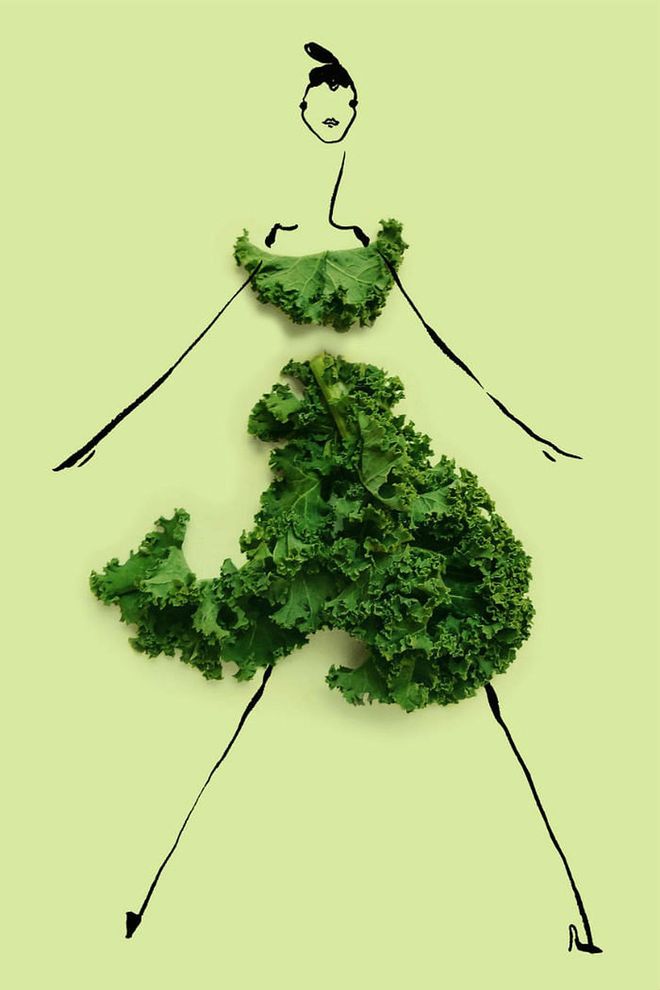Everyone Is Trying The Reverse-Aging Diet For A Younger Face And Body
Can we trick our body into eating its own fat and aging backward?


Photo: Harper's Bazaar US
Diet
This year, the holidays really took a toll. I had a grown-up birthday, which somehow gave me license to drink eggnog with rum every night for a week. Then my eight-year-old got horribly sick and I stayed awake with him five nights in a row, all while nursing a chronic eggnog hangover. By New Year’s Day my son had finally recovered, but I was a puffy and sallow wreck.
I needed to get my mojo back. So when Glow 15: A Science-Based Plan to Lose Weight, Revitalize Your Skin, and Invigorate Your Life, by Naomi Whittel, arrived on my doorstep, I didn’t need a lot of convincing. Its claim? By carefully combining intermittent fasting with varying protein intake as well as other lifestyle changes, I could stimulate an internal cleanup process known as autophagy, which reduces inflammation throughout the body, erasing years from my face—and inches from my waist—in just 15 days.
Related article: 19 Ways To Maximise Your Workout For Weight Loss
“Think of autophagy as a Roomba inside your cells, cleaning and clearing damaged parts,” says Whittel. “When autophagy functions optimally, it works to clear away the cellular junk that can lead to fat and wrinkles.”
"I could stimulate an internal cleanup process...erasing years from my face—and inches from my waist—in just 15 days."
First, the fun part: Four days a week, you get to eat lots of fat and protein for breakfast and end your day with carbs. Snacks are permitted: one high protein mid-morning, and a carb-rich one in late afternoon. And moderate amounts of dark chocolate (one ounce) and red wine (one glass) are not only permitted but also enthusiastically endorsed as healthful treats for the beneficial flavonoids they offer.
But wait. Eat fat? And carbs at night? It sounded like nutritional heresy. After all, aren’t we all supposed to be eating a slab of protein the size of a deck of cards at night? And starting our day with a warm bowl of steel-cut oats?
“No!” says Whittel. While the healthy, whole foods recommended on this diet may sound familiar (lots of wild salmon, lean chicken, eggs, leafy greens, blueberries, sweet potatoes, avocados), what makes it unique is the importance of timing. “It’s less about what you eat than when you eat,” she says.
"Eat fat? And carbs at night? It sounded like nutritional heresy."
Having carbs in the morning triggers a flood of the storage hormone insulin, which causes your body to hold on to fat. This effect is amplified when the stress hormone cortisol peaks in the morning. In other words, put the bagel down, lady, and back away slowly.
“It’s much better to eat your carbs at night when your cortisol level is at its lowest and your body is getting ready for bed,” Whittel explains. Bonus: By boosting serotonin, carbs help induce a relaxed, soporific state.
Related article: Here’s What Miranda Kerr Really Buys At The Supermarket
Now for the hard part: For three nonconsecutive days a week, you must fast for 16 hours to kick-start autophagy. For instance, if you eat dinner at 8 p.m., you wouldn’t eat again until noon the next day. On fasting days, you also eat less protein. Restricting calories and protein forces the body to burn fat for nourishment; if done properly, your body will selectively self-cannibalize, feasting on wrinkle- and fat-causing debris that’s floating around in your cells (as opposed to, say, noshing on your muscles).

Illustration: Gretchen Röehrs
Gretchen Röehrs
It sounds complicated, but it’s not. On day 1, a high- protein day, I ate a “muffin” made of bacon, spinach, cheese, and eggs for breakfast, followed by 30 minutes of high- intensity interval training (HIIT). At lunch I had a superfood BLT bowl—kale, tomatoes, bacon, broccoli sprouts, and avocado drizzled with a balsamic dressing. For dinner I made chicken with sautéed red cabbage, black rice, and apples, and—voilà—carbs! Whittel also recommends taking glow-boosting polyphenol supplements (such as berberine and curcumin). Keep in mind: They are best absorbed when eaten with fat.
Related article: Taylor Hill Reveals How She Stays In Shape Without Following Any Diets
Day 2 was a fasting day, so I didn’t eat until noon the next day, but under Whittel’s plan I was allowed to drink “autophagy tea”—a home-brewed concoction made of black Earl Grey tea (look for one with real bergamot oil), green tea, cinnamon, and coconut oil—which helps curb hunger pains and tastes like a liquid cinnamon bun. My meals were low protein: lemon asparagus soup for lunch, and spaghetti squash with red cabbage and vegetable broth for dinner. And on it went from there: alternating days of low-protein fasting, followed by high-protein non-fasting.
"It’s less about what you eat than when you eat."
On non-fasting days, you are encouraged to exercise. Whittel recommends four workouts a week, either HIIT or resistance training, for 30 minutes at least. After just a few days, my skin was glowing. But I couldn’t help but wonder whether all this fasting and protein cycling was safe. And was my skin really luminous, or was it all just a placebo effect?
“Our bodies were programmed long ago to withstand periods of fasting,” says Luiza Petre, M.D., a cardiologist and weight-loss adviser in New York. In fact, as soaring rates of diabetes and other chronic diseases attest, eating constantly is far more dangerous than fasting intermittently. As for my skin? “Any kind of diet that reduces inflammation in your body will benefit your skin,” confirms Howard Sobel, M.D., a dermatologist in New York.
After 10 days, even my abs were flatter. Interestingly, I found my mental acuity razor-sharp on fasting days, so I’ve adopted the fasting component as part of my regular weekly routine—just maybe not for three days. And the eggnog? Never again.
By Alex Kuczynski
This post originally appeared on Harper's Bazaar US.